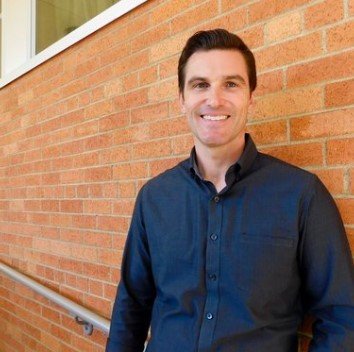Story by Mary King-Moore. Photos by Jan Osborn.
It’s interesting that the color red can be associated with the happiest of feelings but also the worst. It can symbolize love, courage, sacrifice, anger, and danger. Because February is American Heart Month, the color red symbolizes awareness and research for heart disease. For two survivors in Dallas, it also symbolizes passion and strength.

Shannon Phillips
The human heart is responsible for pumping blood through our body. It supplies oxygen and nutrients while also removing toxins and waste by contracting at a rhythmic pace, about 60-80 times per minute, thanks to electrical cells called “pacemakers.” When the heart ceases to perform its regular function, a medical device also called a pacemaker can be implanted to assist the heart. We usually think of the elderly when speaking about pacemakers, but Shannon Phillips received her first pacemaker just after she was born.
As Shannon recalls her early life, she remembers being six years old: “My mom or dad would take me to the cardiologist and we were in a room full of elderly people in their 70’s and 80’s.” Shannon was born with a congenital heart defect (CHD) and has had twelve pacemakers throughout her life. Her parents raised her to believe she could do anything and did not put limitations on her because of her heart condition. Because of the technological advances in medicine, Shannon has led a very full life. She has been married for over 20 years to her amazing husband, Matt, and they have two daughters who are active with hobbies.
Shannon works full-time as the Chief Design Officer at Johnson & Sekin and attributes a lot of her career success to being a survivor. She states, “If I’m going to be here and have the opportunity to live life to the fullest, then I’m going to give that to any project, any assignment, any relationship that I have.” Her husband Matt says that Shannon is the one that remains positive in any situation. “If I’m ever having a hard time, she always picks me up.” One of Shannon’s many strengths is the ability to converse with a variety of people and advocate for the American Heart Association (AHA). She firmly believes the research from AHA is a reason she is here. As one of her surgeons stated, “Heart research affects everybody because for some crazy reason we all have one.”
Interestingly, CHD is one of the most common birth defects, but as medical care and treatments have advanced more and more, people are living longer, healthier lives. Shannon is living proof. “It can only get better for more people.” Her wish is to see a pacemaker with longer battery life. The hope is for her current pacemaker to last another ten years, but she would like to never have another surgery for a replacement. “For me, that would be amazing because it is scary every time. It never becomes less worrisome or scary. And now that I have a family to think about and be a part of and be here for, it makes it that much more scary.” She is grateful for the continued research and does not take one day for granted. Shannon inspires people to live their life to the fullest. “People who think their lives are not perfect, I just want to remind them that life is precious. It’s a gift, and to take it for granted would be a waste.”

Shannon says, “For me, the color red represents love, passion, and heart — all positive things. It can also mean ‘stop’ and I passionately and proudly wear red to support putting a stop to heart disease.”
Another ambassador for heart research is Meredith O’Neal, the Chief Executive Officer at The John Ritter Foundation for Aortic Health and a thoracic aortic dissection survivor. She promotes knowledge about thoracic aortic aneurysms and dissection through research and education at the Foundation. Her survival story began when she was 37 ½ weeks pregnant with her first baby. As she was walking down the hallway towards her bedroom early one morning, she had a sudden, searing pain in her chest. Then her right leg went completely numb. Knowing immediately that something was horribly wrong, Meredith rushed to the hospital. Meredith’s doctor told her in the trauma room, “it’s your worst nightmare and today is your baby’s birthday.”

Meredith O’Neal
Meredith was the fifth dissection in four generations. She was told to say goodbye to her family and her husband of only three years. She had a c-section and open-heart surgery on the same table. Her father, Gary Ford, recalls, “The thing that goes through your mind is that we could lose two generations right here.” Meredith remembers the room full of people attending to her just before her surgery. She recalls praying with her heart surgeon. “He prayed for the Lord to give him strength and guidance.” She was later told that as the anesthesia was being administered, her last words were, “You have to keep me alive because I have two boys to take care of, my husband and my son.”
Miraculously, Meredith’s life was saved and she met her beautiful boy, Geoffrey, the following day. She shares her story of survival to spread hope. Hope for researchers to find markers to identify the genes that cause the disease. “Every family has something. This is ours. We have to continue working to figure out what’s causing it,” says Meredith. For their family, it’s been identified as genetic, but like a puzzle, there are missing pieces. Meredith is hopeful for major medical breakthroughs that could save Geoffrey’s life, as well as others with this condition.
An aortic dissection can be difficult to diagnose because the symptoms can be similar to other heart health problems such as a heart attack. The John Ritter Foundation created Ritter Rules to educate people on how to recognize, treat, and prevent thoracic aortic dissection. The guidelines promote life-saving information about urgency, who is at risk, and required aortic imaging tests. Meredith joined The John Ritter Foundation to spread awareness about the disease and prevent further loss of lives.
For Meredith, the color red symbolizes strength. “I’ve always been drawn to the color red. I love red purses and red shoes. I even had a red couch. I think it is a powerful color and when I wear it, I feel strong. Red reminds me that I not only survived, but I thrived after a nearly fatal heart condition and that my aortic dissection does not define me.”

Over the years, Shannon and Meredith have been working together to raise life-saving awareness, more research, and critical funding to benefit The American Heart Association and The John Ritter Foundation, raising more than $16 million for heart research and awareness.
So this February, when you see the color red, we hope it will spark emotion and keep you curious about cardiovascular health. We hope you will think of courage, gratitude, survival, and above all, love. If you would like to learn more about congenital heart defects, thoracic aortic dissection, and other heart diseases please visit the American Heart Association website and The John Ritter Foundation for Aortic Health.
Featured
Featured
Josh Taylor was deployed to the Middle East, flying missions into Iraq, Afghanistan, and Syria, when he realized that many of the people he spoke to were divided. It was 2018, and Josh had already been in the Armed Forces for over ten years, but he wanted to find a cause that could unite the nation. “Flying 65,000 miles and spending 300 hours in a machine gives somebody a moment to think,” Josh says. Eventually, he found his answer– our youth, and alongside them, our educators– have the strength to be the foundation for our country.
When Lisa Wong launched the STEM program at Trinity Christian Academy, her goal and passion was to teach the kids that they can use STEM fields to bless others in the world around them. She views her time as an investment in the future.



